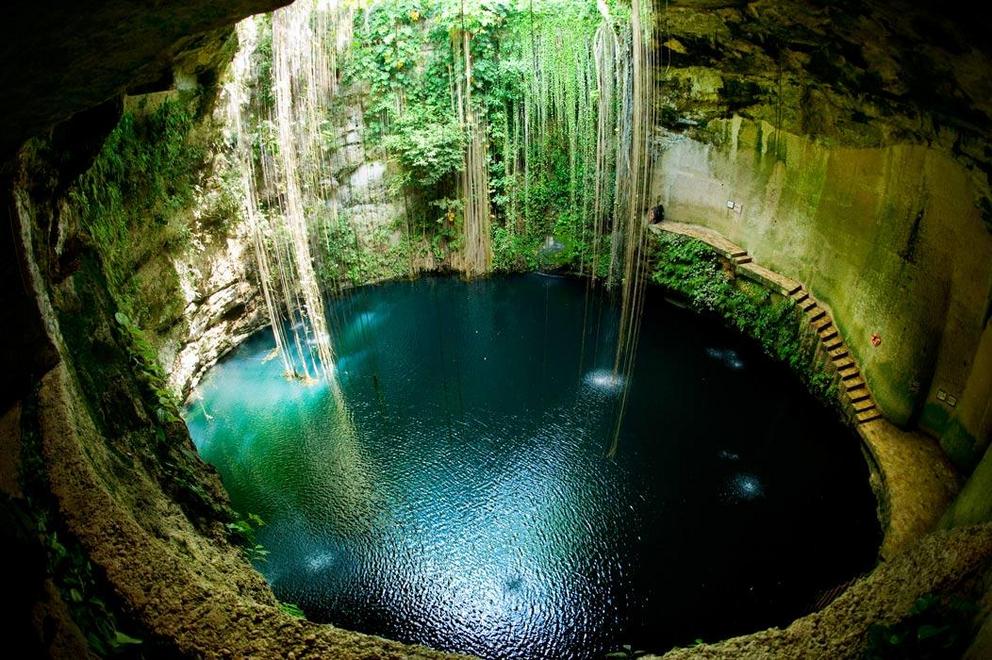Sacred Cenotes: portals to the Maya underworld
Top Image: Ik-Kil cenote , Chichen Itza, Mexico
The ancient Maya who populated the Yucatan Peninsula in the first millennium AD believed that there were three ways for the living to enter Xibalba, the world of the dead: through deep caves, through competition in the Maya ball game, and through the sacred cenote (sinkholes). It was the cenotes that were most important to the ancient Maya religion, for through these underground caverns came life as well as death.
The Importance of the Cenotes
The Yucatan Peninsula has no natural above-ground rivers and few lakes. It does, however, have a massive network of subterranean caves connected by underground streams and rivers. Many of these caverns are believed to have been formed by meteor strikes associated with the massive meteor that contributed to the extinction of the dinosaurs during the Cretaceous–Paleogene extinction event.
Much of the Peninsula is made up of limestone, which over time erodes and causes the ground to collapse into the water-filled cave below. These are sinkholes or cenotes and it is this source of groundwater that enabled the people of the Yucatan to flourish into the great Maya civilization.
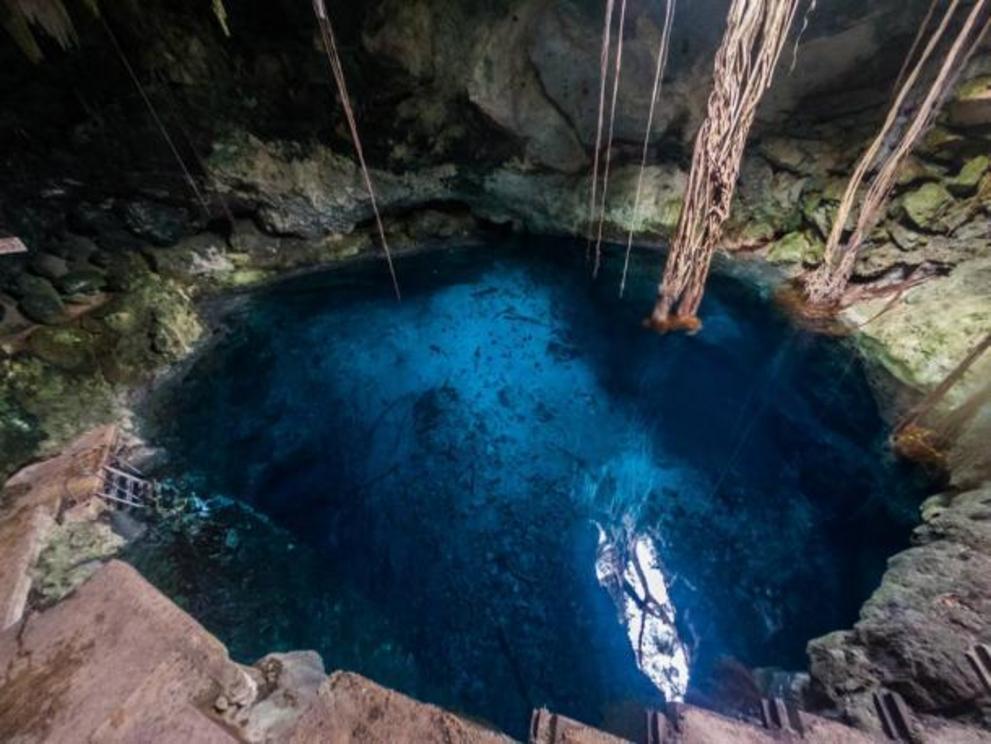 The Maya people in the Yucatan relied on the water of the cenotes.
The Maya people in the Yucatan relied on the water of the cenotes.
Why are Cenotes Sacred to the Maya?
The ancient Maya were not ignorant of the vital significance the cenotes played in their survival. The sinkholes thus became places of worship. Indeed, it has been recently discovered that Chichen Itza , the famous Maya pyramid temple, was built upon a massive cenote.
They believed that Kukulkan, the Maya feathered serpent deity, grew up in the underworld cave until finally he became so big that he broke through the surface of the earth with a mighty earthquake and flew to the sun.
To honor Kukulkan, the Maya built the architecturally astounding Pyramid of Kukulkan (called El Castillo by the Spanish conquistadors). The pyramid was built to align with the Maya calendar, a feat that reflects advanced knowledge of mathematics and astrology.
Twice a year, the sun shines just right on the temple so that the steps form the shadow a giant snake. This is Kukulkan who can be seen, over the course of roughly 45 minutes, descending from the heavens, down the bisecting staircase, and into the earth below. There he will rejoin his brethren in Xibalba.
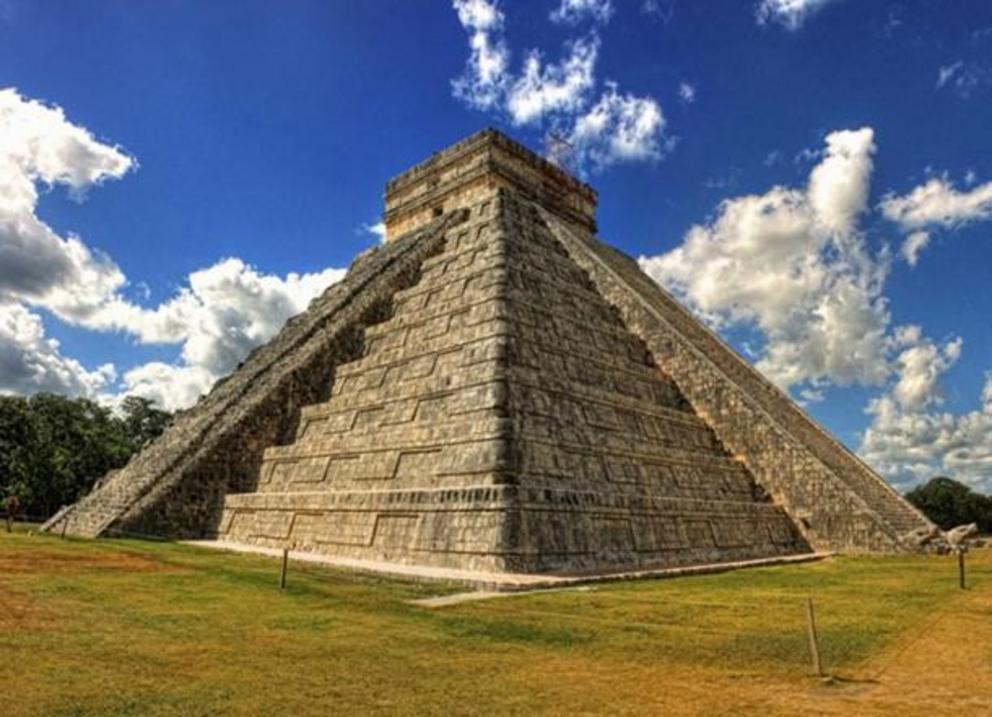 The Pyramid of Kukulkan was built above a giant cenote
The Pyramid of Kukulkan was built above a giant cenote
Lords of the Maya Underworld
The Maya believed that the royal court of Xibalba hosted 12 deities, the Lords of Xibalba. The head of the pantheon is Hun-Came (“One Death”) followed by Vucub-Came (“Seven Death). The remaining ten Lords are demons that each rule over a particular form of human suffering.
According to the Maya mythos, these demons often worked together in pairs. There was Xiquiripat ("Flying Scab") and Cuchumaquic ("Gathered Blood") who worked to poison people’s blood. There was Ahalpuh ("Pus Demon") and Ahalgana ("Jaundice Demon") who made bodies swell and rot. There was Chamiabac ("Bone Staff") and Chamiaholom ("Skull Staff"), who slowly striped the flesh from the dead to turn them into skeletons. There was Ahalmez ("Sweepings Demon") and Ahaltocob ("Stabbing Demon"), who were believed to hide in the unswept areas of a person’s home and stab them to death. And finally there was Xic ("Wing") and Patan ("Packstrap"), who made people cough up blood and suffer while walking on a road.
In addition to the 12 Lords of Xibalba, there were numerous residents there who fallen under the dominion of a Lord and sometimes were obliged to return to the surface of the Earth to help the Lords carry out their trickery and suffering.
 Vessel depicting deities in the court of Xibalba.
Vessel depicting deities in the court of Xibalba.
Needless to say, with such a well-formulated pantheon of demons, the Maya were very concerned with appeasing the inhabitants of Xibalba. The temple of the Chichen Itza is believed to have been a means to facilitate sacrificial offerings to the gods, including human sacrifices.
When the cenote beneath the Pyramid of Kukulkan was dredged, a whole manner of objects were found, including wooden objects (preserved by the water), tools, and idols, as well as a large selection of jewelry and precious metals such as gold, silver, copper, and most of all, jade. A lot of the objects appear to have been intentionally broken before being thrown into the cenote below, perhaps suggesting a ‘killing’ of the object that was to be sacrificed to the gods of death.
Excavations have also revealed many human bones that show wounds indicating human sacrifice. The corpses are of men, women, and children, with many of the younger victims being male.
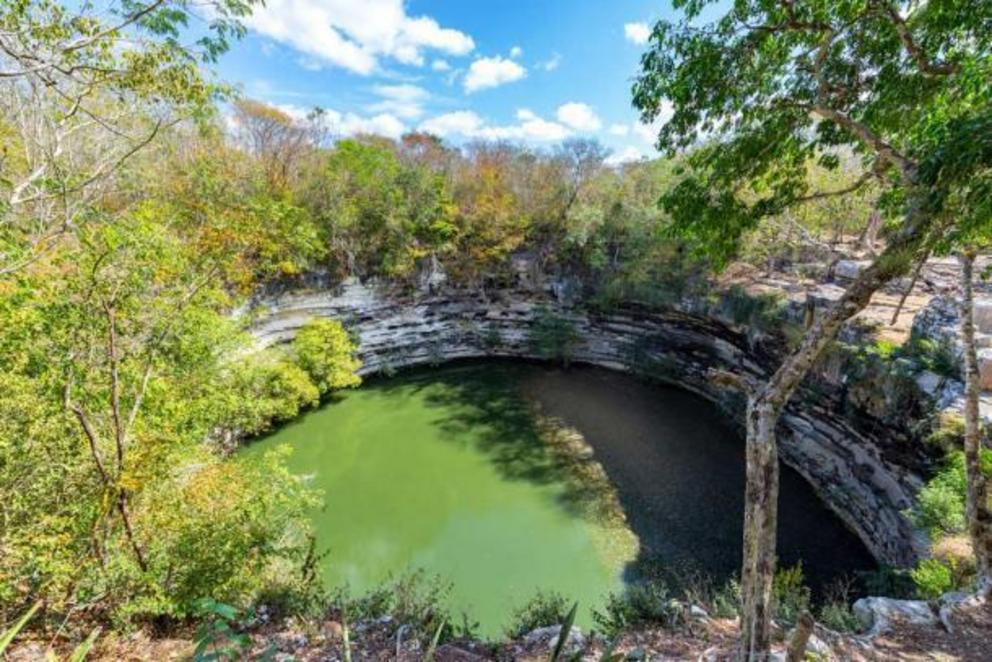 The Sacred Cenote at Chichen Itza
The Sacred Cenote at Chichen Itza
One popular theory as to why the Maya civilization collapsed is that a long-lasting draught afflicted the Yucatan Peninsula. This could have led to an uptick in the number and value of sacrifices as citizens desperately begged the gods to restore their life-giving ground water.
The Growing Cenote Could Cause the Pyramid of Kukulkan to Collapse
New studies reveal that the cenote may, in fact, be growing in size as its limestone walls slowly disintegrate. Archaeologists worry that the Pyramid of Kukulkan could collapse into the cavern below if the limestone floor it is built upon weakens further. Currently, that crucial platform is only 16 feet (5m) thick.
“Such structures change over time, because the water washed off the walls and the cavity may be increasing,” said Dr. Rene Chavez Segura, a geologist with the National Autonomous University of Mexico, noting the running water of the underground cenote network and the high humidity in the cavern. “At some point, if the thickness of the rock below the pyramid is thinned, there could be a problem of stability and El Castillo will collapse.” However, Dr. Segura adds that this is unlikely to happen anytime soon.
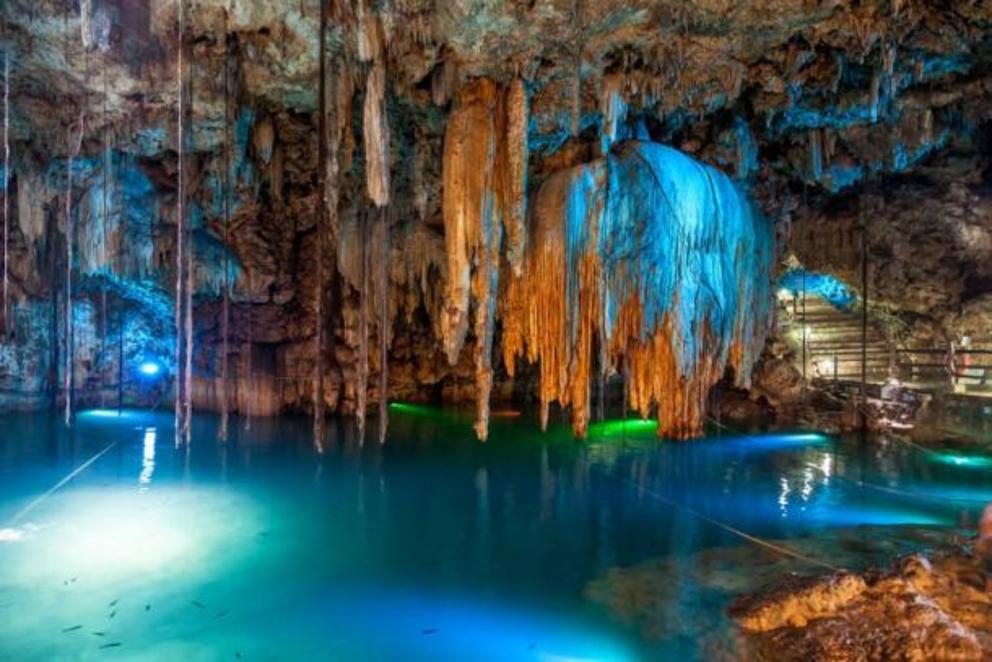 Cenote Dzitnup near Valladolid, Mexico.
Cenote Dzitnup near Valladolid, Mexico.

